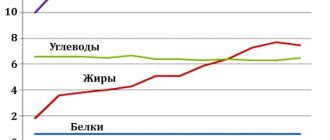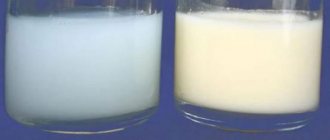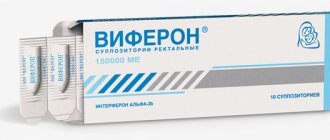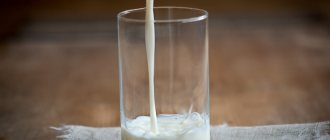A person is surrounded by a huge number of beneficial and pathogenic bacteria. Staphylococci are not the least important among them. They are found in the air, soil and exist in the normal microflora of human skin. Such bacteria are completely harmless to a healthy body. However, if the immune system malfunctions, staphylococci can cause diseases of varying severity. This factor puts pregnant and lactating women at risk. There is a chance that they can pass staph in their breast milk to their baby.
Opportunistic bacteria in breast milk
Breast milk has been and remains the best way to feed babies. Children raised on this type of feeding get sick less often and develop better. But there are situations when pediatricians prohibit natural feeding. This happens when opportunistic bacteria are detected in milk, which can disrupt the intestinal microflora and lead to serious illness in the child.
When it enters the baby’s stomach along with milk, staphylococcus begins to actively multiply, and its waste products are released into the child’s body. This leads to the development of inflammation in the internal organs. Some diseases provoked by a pathogen lead to pneumonia, meningitis, and blood poisoning.
According to WHO, human milk can contain dangerous microflora, which quickly develops in the defenseless body of a newborn.
The most dangerous:
- Staphylococcus aureus and Staphylococcus epidermidis;
- enterococci, Escherichia coli;
- shigella and klebsiella;
- yeast fungus candida and others.
Most of the pathogens are not contained in the milk itself, but enter through microcracks in the mother’s nipples during feeding.
How are nursing mothers treated?
The treatment protocol for women during lactation is almost no different from the treatment of other people. The only difference can be that if breastfeeding does not stop, then the doctor tries to limit himself to adsorbents, probiotics and antipyretics. A woman should drink a lot. You can drink clean water without gas, or you can prepare compotes from dried fruits.
If the condition is too severe and the prescribed gentle treatment does not give an effect, then they resort to antibiotics. When prescribing antibacterial drugs, the results of bacterial culture of vomit and feces are taken into account. If such tests were not performed for some reason, the patient is prescribed broad-spectrum antibiotics.
Probiotics must be prescribed along with antibiotics to prevent the development of dysbiosis.
How the pathogen is transmitted from women to children
Staphylococcus can be found in mother's milk in different ways. It takes root in a cracked nipple or damaged areas of the skin, and enters a clogged milk canal. As a result, the baby and mother suffer, who may develop mastitis if Chlorophyllipt is not applied in time. Therefore, a woman must take care of her health.
The most common routes of infection to the mother are airborne and contact. The first is most likely while in the antenatal or postnatal ward. If the institution does not regularly treat wards with quartz and wet cleaning with a chloramine solution, pathogenic bacteria, including staphylococcus, multiply very quickly. You can become infected through contact during communication with infected people or through the use of shared hygiene items and things.
At the same time, the likelihood of a baby contracting staphylococcus increases if:
- premature baby;
- with low weight;
- there are congenital diseases;
- switched to additional nutrition when the mother’s milk supply was insufficient.

Staphylococcus can also be transmitted if the mother did not receive Chlorophyllipt in time and, as a carrier of the infection, infected the fetus in utero.
When treatment is needed
As practice shows, with the normal development of the baby, dangerous consequences from infection with Staphylococcus aureus through mother's milk can be avoided.
Most often, the development of infectious diseases occurs in children with weakened immune systems and in babies born prematurely.
The infection is most dangerous for a young mother. Infectious mastitis is a complex disease and requires drug treatment.
If there is any suspicion of infection, a mother's milk test should be ordered. Based on the results of the analysis, the doctor prescribes treatment. However, a positive test also cannot always indicate the presence of infection in the mother, because it requires absolute sterility, which is very difficult to achieve even in a scientific laboratory. Staphylococcus in nursing mothers is not a rare occurrence, but there are ways to prevent this disease. First of all, prevention comes down to proper nipple care. Do a self-analysis of your breast condition. Avoid the appearance of cracks and chafing, and if they appear, take measures to disinfect and heal the nipples.
Read also:
If you haven't had your period a year after giving birth, should you sound the alarm?
It is also necessary to observe basic hygiene rules. You need to wash your breasts with soap once a day. Before each feeding, wash your hands and change your underwear more often, which must be ironed with a hot iron. Following these simple rules will help prevent infection from entering the body of mother and child.
Signs of illness in a child
Once in the body of a newborn and developing there, Staphylococcus epidermidis, Staphylococcus aureus provokes certain symptoms that need to be immediately noticed.
Signs of characteristic diseases caused by pathogenic bacteria can be expressed in different ways. The baby's feces become mushy with the addition of mucus. The number of regurgitations increases and vomiting appears. Body temperature remains above normal. Worried about spasmodic pain in the abdomen. The doctor diagnoses enterocolitis.
Pemphigus is a particularly dangerous disease, since its advanced form can lead to sepsis if proper drug treatment is not received. It is characterized by inflammation of the skin surface in the lower abdomen and back. Multiple bubbles appear filled with a cloudy substance. The same manifestation can occur in the cervical folds.
The easiest way to determine the appearance of purulent conjunctivitis. With this disease, in the morning the child’s eyelids stick together, everything is covered in dry crusts. They cannot be opened independently. There is a constant secretion of tears and pus from the eyes.
It is difficult for children to endure such a lesion as phlegmon. In addition to constant malaise and fever, there are numerous swollen and reddened swellings, under which pus accumulates.
How to keep your child safe
If the intestinal infection during breastfeeding is not too serious and breastfeeding does not stop, the mother needs to follow certain rules to protect the baby. Such rules mainly come down to hygiene.
- After each visit to the toilet, you must wash your hands thoroughly with soap. It is worth remembering that many intestinal infections are transmitted through the fecal-oral route.
- Before feeding the baby or changing his clothes, the mother should wash her hands and put on clean clothes.
- Things of a patient with an intestinal infection should be washed with the addition of disinfectants and at high temperatures.
- Before each feeding, the breasts should be washed well with a soda solution.
- If a mother is sick with rotavirus, she should wear a gauze mask when feeding her baby.
Rules for collecting analysis for bacteriological culture
If the baby is capricious, sleeps poorly, regurgitates frequently, and the stool differs from what it should be, then it is necessary to have your breast milk tested for staphylococcus. This will require some care, but overall the procedure is not too complicated.
- Prepare 2 sterile test tubes or jars with lids; you can purchase them at a pharmacy or use containers available at home.
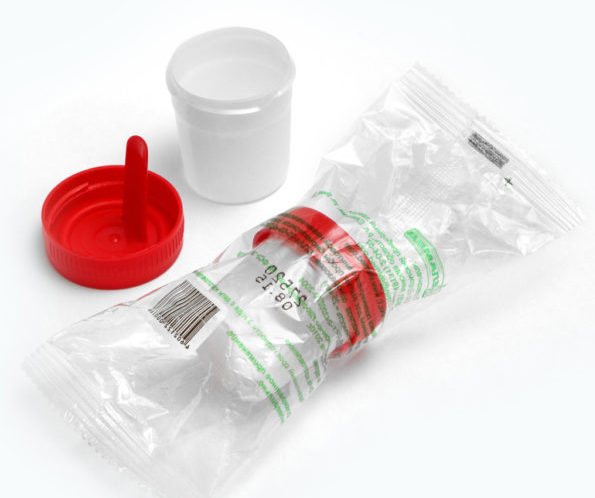
- Wash 2 small jars, boil them for at least 15 minutes, wipe the tight lids with moistened soda, rinse and immerse in boiling water for 1 minute.
- Wash your hands, breasts, nipples and areolas with baby soap, wipe everything with sterile wipes, you can use Chlorophyllipt for lubrication.
- Label the dishes, since the milk from each breast is expressed into a separate jar.
- The first 10 ml of milk should be expressed into the sink to prevent the entry of bacteria that could remain after rinsing the nipples.
- The second portion of 10-20 ml is expressed into jars, which must be closed immediately.
- After this, the tests are submitted to the laboratory for bacteriological culture within 3 hours.
The results of the test for staphylococcus, obtained after 5–7 days, are transferred from the laboratory to the pediatrician. Only he can decide on the need for treatment and which drugs are best to use.
Intestinal infections
There are many causes of intestinal infection. You can become infected through dirty hands, stale food, from animals and people who are the source of infection. Pathogenic microorganisms can be transmitted in the following ways:
- Airborne.
- Fecal-oral.
- Bytovym.
- Pishchev.
- Water.
In some cases, a nursing mother becomes ill after interacting with a sick person; in another case, the source of infection may be contaminated water or stale food. The most commonly diagnosed intestinal infections are:
- Rotavirus.
- Enterovirus.
- Dysentery.
- Salmonellosis.
- Botulism.
Each of these infections has its own characteristics, therefore, depending on the diagnosis, the doctor decides to temporarily stop breastfeeding. Not only the form of intestinal infection is taken into account, but also the general condition of the mother. If a woman suffers a severe illness, then breastfeeding until complete recovery is not recommended.
At the first signs of an intestinal infection, a nursing woman should see a doctor. The doctor will not only make a diagnosis and prescribe treatment, but will also give practical recommendations regarding breastfeeding.
Possibility of breastfeeding during maternal treatment
If staphylococcus is detected in breast milk, then there is no need to stop breastfeeding. This fact cannot be the reason for denying the baby natural feeding.
If necessary, along with a course of treatment with Chlorophyllipt, the doctor will prescribe medications to the woman that, together with natural milk immunoglobulin, will protect her baby from dysbacteriosis.
Along with drug treatment, preventive procedures are performed:
- you need to dilute vitamins A and E with linseed oil and smear the nipple area with this solution;
- regularly wash your breasts thoroughly before feeding;
- exclude from the diet foods that create an environment for the proliferation of microbes.
- for upper respiratory tract disease, use chlorophyllipt, which will quickly stop the development of infection.
Doctors came to the conclusion that the presence of bacterial microflora in the lacto-medium is normal. A critical amount of staphylococcus is still not transmitted through mother's milk to cause any serious illness in the child.
When can feeding be continued?
If a nursing mother is diagnosed with rotavirus or enterovirus, breastfeeding may not be stopped. These infections are not transmitted through milk, so if certain hygiene rules are followed, the baby will not become infected.
The same goes for food poisoning. In this case, the child’s health is not at risk. If a woman has good immunity, then within a couple of days her health will improve significantly.
But you can continue breastfeeding only if the mother’s condition is not too severe. If a woman suffers a severe illness, she has severe symptoms of intoxication and dehydration, then it is better to stop breastfeeding. At this time, a woman needs to create all the conditions for recovery and limit any stress on the body.
To maintain lactation, it is recommended to express your breasts frequently. The resulting milk can be boiled in a water bath and given to the child.
